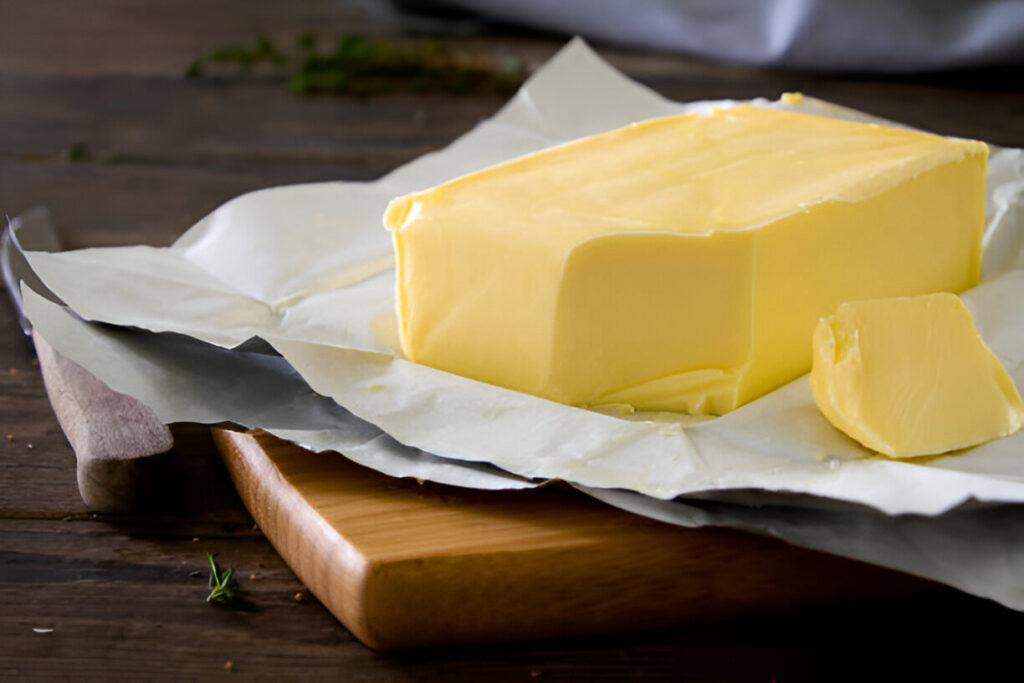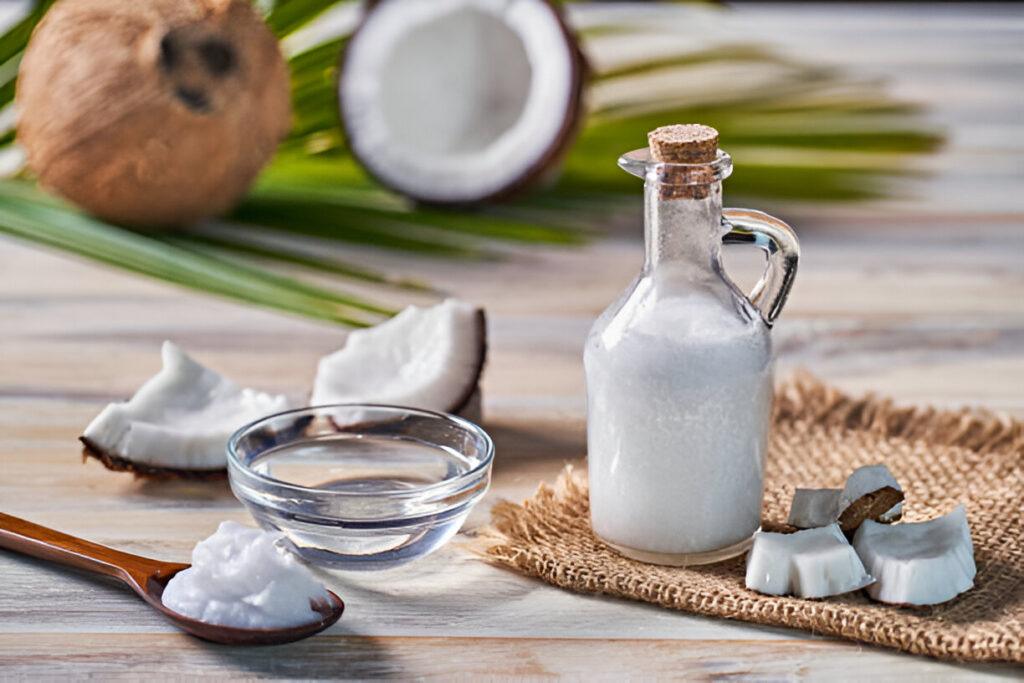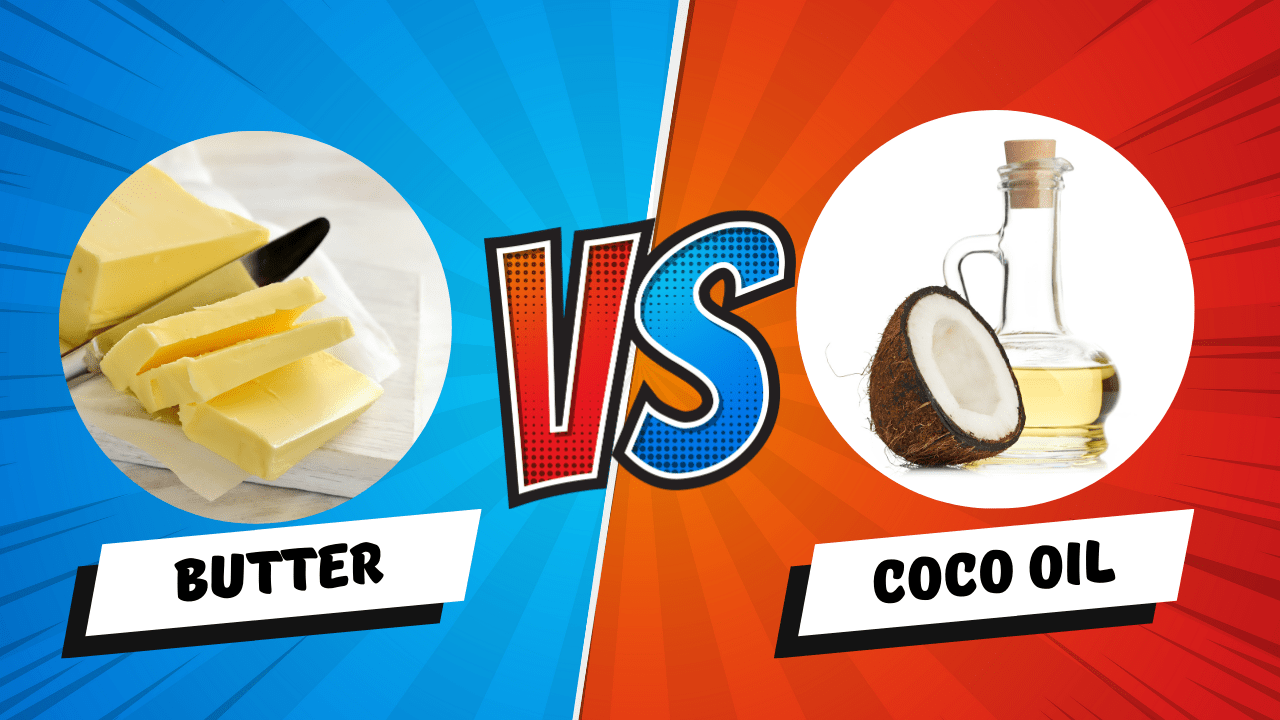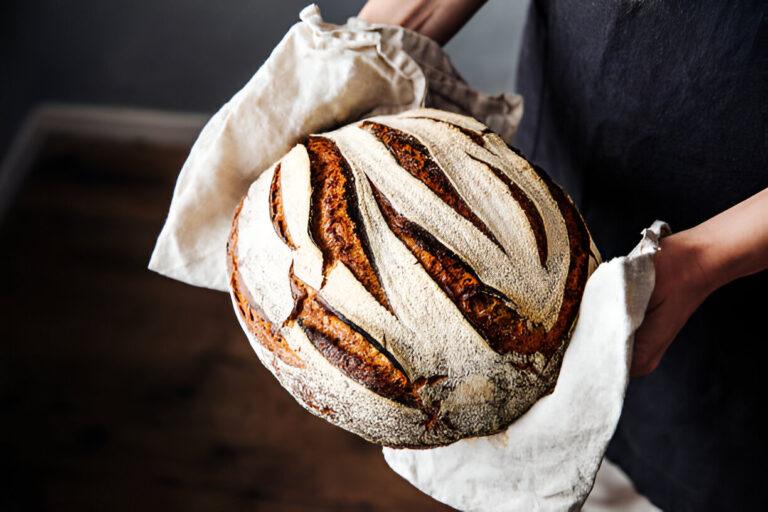Butter vs. Coconut Oil: The Ultimate Gluten-Free Baking Fat Showdown!
Choosing the right fat can make or break your gluten-free creations. In the world of gluten-free baking, two popular contenders often step into the ring: classic butter and versatile coconut oil. Both are kitchen powerhouses, but they bring different strengths to your mixing bowl. Wondering which one will give you the flakiest pie crust, the chewiest cookie, or the most tender cake?
Let’s dive into the delicious details of butter and coconut oil in gluten-free baking. We’ll explore how they perform, what flavors they bring, and when to choose each one to guarantee your gluten-free treats are always a hit!
The Gluten-Free Baking Challenge: Why Your Fat Choice is Extra Important

Gluten-free baking is an art and a science! Without gluten (the protein that gives traditional baked goods structure and elasticity), we need our other ingredients to work a little harder. Fats, especially, play a starring role. They’re not just there for flavor; they’re crucial for:
- Texture: Creating that tender crumb or satisfying chew.
- Structure: Helping to build the framework of your bakes.
- Moisture: Keeping your goodies from drying out too quickly.
Understanding how different fats behave is your secret weapon for conquering gluten-free baking.
All About Butter: Flavor, Tenderness, and Classic Performance

Butter has been a baking staple for generations, and for good reason! Here’s what it brings to your gluten-free recipes:
How it Behaves in the Heat: Butter has a relatively low melting point. This helps create a tender, delicate crumb in cakes and a flaky texture in pastries. When heated, it separates into fat and milk solids – browning these milk solids is what gives you that delicious “brown butter” flavor!
What’s Inside? Butter is mostly fat, but it also contains milk solids and water. It naturally offers vitamins A, D, E, and K. Whether you choose salted or unsalted, the quality can impact your final bake.
Unbeatable Flavor: Let’s be honest, butter adds a rich, creamy, and often slightly nutty flavor that’s hard to replicate. It can elevate simple gluten-free recipes, making them taste more luxurious. Cultured butter, if you can find it, offers an even deeper, more complex taste.
How Fats Compensate for Missing Gluten Structure
Fats play a vital role in gluten-free baking by providing structure, tenderness, and moisture. Butter and coconut oil, with their different compositions and properties, offer unique benefits. Understanding how these fats function in gluten-free recipes is essential for achieving the desired outcomes.
Spotlight on Coconut Oil: A Versatile Player for Modern Gluten-Free Kitchens

Coconut oil has surged in popularity, offering unique benefits for gluten-free cooking and baking.
- What’s Inside? Coconut oil is packed with saturated fats, notably medium-chain triglycerides (MCTs). MCTs are processed differently by the body and are often touted for potential health perks. Its high saturated fat content also means it’s solid at room temperature and stable at higher cooking temperatures.
- A Touch of the Tropics (Or Not!): Unrefined (or virgin) coconut oil has a distinct coconutty aroma and taste, which can be wonderful in recipes where that flavor is welcome. Refined coconut oil, on the other hand, is much more neutral, making it a versatile swap when you don’t want a coconut flavor.
- How it Behaves in the Heat: Coconut oil generally has a higher melting point than butter. This can contribute to a slightly different structure in baked goods. It can create wonderfully chewy cookies and moist brownies. Because it’s solid at room temperature, it can sometimes lead to denser bakes if not balanced correctly with other ingredients.
Head-to-Head: Butter vs. Coconut Oil in Your Gluten-Free Bakes

So, when the mixing bowls come out, which fat should you reach for?
- Texture & Crumb Showdown:
- Butter: Often yields a softer, more tender, and cakier crumb due to its water and milk solids. Think classic birthday cakes and flaky scones.
- Coconut Oil: Tends to produce a slightly denser, yet often very moist and chewy texture, especially in items like brownies and some cookies.
- Moisture Matters:
- Butter: The water content in butter can contribute to initial moisture.
- Coconut Oil: While containing no water, its fatty acid profile can help lock in moisture effectively, sometimes leading to bakes that stay fresh-feeling longer.
- Shelf Life Secrets:
- Coconut Oil: Its high saturated fat content makes it less prone to going rancid quickly, potentially giving your treats a slightly longer shelf life.
- Butter: Being a dairy product, items made with butter might require more careful storage (like refrigeration for some goods) to maintain freshness.
Flavor Factor: How Will They Change Your Recipe’s Taste?

Butter’s Rich Charm: Butter’s creamy, savory notes shine in both sweet treats (like shortbread) and savory dishes (think rich sauces or buttery gluten-free dinner rolls). Browning butter first can add an incredible nutty depth. Coconut Oil’s Unique Personality:
- Unrefined: Lends a distinct, often desirable, coconut flavor – perfect for tropical-themed cakes or energy balls.
- Refined: Stays in the background, letting other flavors take center stage. This makes it a great neutral fat for many recipes.
Tip: Don’t be afraid to experiment! Sometimes a blend of both fats can give you the perfect balance of flavor and texture. You can also use extracts like vanilla or almond, or spices like cinnamon and nutmeg, to complement or subtly mask the fat’s primary flavor.
Health Notes & Dietary Needs
Saturated Fats: Both are high in saturated fats. Current dietary advice generally suggests consuming saturated fats in moderation. Coconut oil is rich in MCTs, which are metabolized differently than the longer-chain fatty acids prevalent in butter. Dairy-Free & Vegan? Coconut Oil is Your Friend! This is a key differentiator. Coconut oil is naturally dairy-free and vegan, making it the go-to for these dietary approaches. Butter, being dairy, is not suitable. (Though many good vegan butter alternatives are now available!)
Practical Swaps & Best Uses: Your Gluten-Free Fat Guide
Ready to experiment? Here’s how to substitute and choose the best fat:
High-Heat Applications: Refined coconut oil has a higher smoke point than butter, making it good for some frying or roasting applications if needed (though less common in baking itself).
Substitution Smarts:
You can often substitute butter and coconut oil in a 1:1 ratio.
Melting is Key: If a recipe calls for melted butter, use melted coconut oil. If it calls for softened butter (creamed with sugar), use solid (but scoopable) coconut oil.
Texture Tip: When using coconut oil in place of butter in some baked goods, especially cookies, you might find the dough spreads differently. Chilling the dough can help! Some bakers also find that reducing the oven temperature slightly (e.g., by 25°F or about 15°C) when using coconut oil can prevent over-browning, as it can sometimes bake faster.
When Butter Shines in Gluten-Free Cooking:
Breads & Pastries: For that classic flavor and flaky, tender texture in items like gluten-free croissants, pie crusts, and rich breads.
Savory Dishes & Sauces: Perfect for creating rich pan sauces, sautéing vegetables, or simply spreading on warm gluten-free toast.
When Coconut Oil Rocks Gluten-Free Recipes:
Cookies & Brownies: Excellent for achieving a chewy, moist texture. Its flavor (especially unrefined) can be a delicious bonus.
Dairy-Free & Vegan Baking: The obvious choice for making any recipe dairy-free without fuss.
Conclusion: Your Kitchen, Your Choice!
Ultimately, there’s no single “winner” in the butter vs. coconut oil debate for gluten-free baking. The best choice truly depends on:
- The specific recipe you’re making.
- The texture you’re aiming for (flaky, chewy, tender?).
- The flavor profile you desire (rich and buttery, or perhaps a hint of coconut, or neutral?).
- Any dietary restrictions (dairy-free or vegan needs).
By understanding the unique personalities of butter and coconut oil, you’re empowered to make informed decisions that will lead to delicious, successful gluten-free treats every time. Happy baking!
Hungry for More? Gluten-Free Fat FAQs
Q1: What are the main benefits of coconut oil in gluten-free baking?
A: Coconut oil is great for dairy-free/vegan recipes, can contribute to a lovely chewy texture in bakes like cookies and brownies, and unrefined versions add a pleasant coconut flavor. Refined coconut oil is a good neutral-flavored fat.
Q2: Can I always swap butter for coconut oil 1:1 in gluten-free recipes?
A: Generally, yes, a 1:1 substitution works. However, consider their state (solid vs. liquid). For recipes creaming butter and sugar, use solid coconut oil. For melted butter, use melted coconut oil. Results in texture might vary slightly, so don’t be afraid to experiment!
Q3: How does coconut oil change the taste of my gluten-free baked goods?
A: Unrefined coconut oil will impart a noticeable coconut flavor, which can be delicious. If you don’t want that, use refined coconut oil, which is very neutral in taste.
Q4: What if I need a dairy-free option but don’t want a coconut flavor?
A: Use refined coconut oil. It has a very neutral taste and works well as a butter substitute in many gluten-free recipes where you want the fat but not a strong coconut presence.
Q5: How should I store butter and coconut oil to keep them fresh?
A: Keep butter in the refrigerator to prevent spoilage. Coconut oil is best stored in a cool, dark, dry place; it will be solid at cooler room temperatures and liquid when it’s warmer. Always check expiration dates.

Written by Samantha Greene, a gluten-free home cook with over 10 years of experience creating allergy-friendly recipes the whole family can enjoy.






